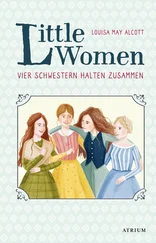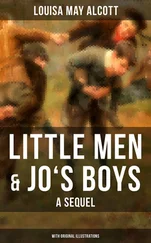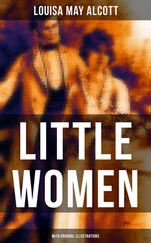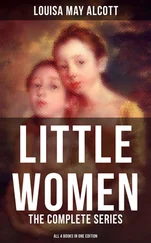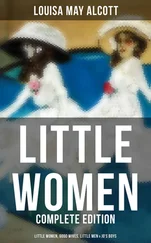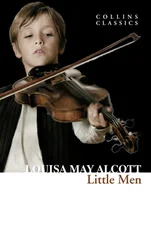(p. 18) “Do you remember how you used to play Pilgrim’s Progress when you were little things?”: In the discussion that follows Mrs. March’s question, references to The Pilgrim’s Progress (see endnote 1) include: the City of Destruction, the evil birthplace of Christian and the starting point of his journey to the Celestial City (Heaven); Apollyon, the hideous fiend who attacks Christian in the Valley of Humiliation; the Slough of Despond, a treacherous bog in which Christian is trapped; and the roll of directions, instructions for Christian’s journey.
(p. 72) the little Irish children, who were their sworn foes: Amy’s scorn for the Irish children, although Alcott doesn’t go into it at length here, expresses the author’s own prejudices against this ethnic group; the Irish population had been burgeoning in the United States since the Great Famine in Ireland (1845-1850) and its consequent mass emigration. Even though Alcott and her mother, at one time a social worker in Boston, made a point of defending and accepting the humanity of other persecuted groups of the time—such as German-speaking immigrants (represented by the Hummels in this book) and African Americans (see Jo’s eagerness at the end of Little Women to include a boy of mixed race in her school)—the Alcotts dismissed the Irish as being lazy, dirty, and unwilling to help themselves in order to improve their situation.
(p. 111) Plumfield is about as gay as a churchyard: Plumneld is a thinly disguised reference to Fruitlands, a utopian vegetarian and shared-work community cofounded by Alcott’s father in the rural town of Harvard, Massachusetts, in 1843, when Louisa was ten years old. Alcott’s family resided there for the duration of the community’s eight-month existence, suffering much deprivation and hardship, particularly toward the end.
(p. 127) a smooth strip of turf for croquet: Croquet is a lawn game that was popular during the nineteenth century. Players use mallets to send wooden balls through hoops, called wickets, that are arranged on the lawn to form a course. Croquet terms used here include: stroke, a swing at the ball with a mallet; and stake, a marker at the end of the course.
(pp. 131-132) “Up with the jib . . . ‘To the bottom of the sea, sea, sea,’ where—”: Fred loosely drops many nautical terms here: Up with the jib is an order to raise the jib, a triangular sail forward of the mast; reef the tops’l halliards means to lower the topsail with ropes, or halyards; helm hard alee means turn the ship to the leeward side—that is, away from the wind—in order to tack, or bring the bow through the wind; a schooner is a two-masted vessel; lee scuppers are drain holes on a ship’s leeward side; the Bosun’s mate is the assistant to the boatswain, the officer responsible for maintaining the ship’s hull; take a bight of the flying-jib sheet is an order to slacken the rope that regulates the angle of the jib sail; start this villain means to start someone walking the plank; tars is a slang word for sailors; to scuttle a ship is to make holes in its bottom in order to sink it; all sail set means the sails are raised.
(p. 231) PART Two: Originally titled Good Wives , the second part of Little Women appeared in 1869, a mere six months after publication of part one, as a response to the first March volume’s phenomenal overnight success. Readers had begged Alcott for information about their beloved girls’ future, especially how well and to whom they were married. Alcott wrote this sequel very quickly (in two months’ time); although she catered to popular taste by consenting to marry off her heroines, she refused to partner them in accordance with her audience’s expected, hoped-for conclusions.
(p. 251) Murillo . . . Rembrandt . . . Rubens . . . Turner: Bartolome Esteban Murillo (1617—1682) was a Spanish religious and portrait painter. Rembrandt Harmensz van Rijn (1606-1669) was a Dutch painter known for his mastery of light and shadow. Peter Paul Rubens (1577-1640) was a Flemish painter known for his voluptuous female figures. Joseph Mallord William Turner (1775-1851) was an influential, groundbreaking English landscape painter famous for his brilliant use of color and abstract, dreamlike effects.
(p. 262) while Professor Sands was prosing away about Belzoni, Cheops, scarabei, and hieroglyphics: Professors Sands is discoursing on ancient Egypt: Giovanni Battista Belzoni (1778-1823) was an Italian explorer and archaeologist of ancient Egyptian antiquities. Cheops, or Khufu (twenty-sixth century B.C.), was a king of Egypt who erected the Great Pyramid at Giza. Scarabei, ancient Egyptian beetle sculptures, were symbols of resurrection. Hieroglyphics are characters used in a system of pictorial writing employed in ancient Egypt.
(p. 307) for at Hampton I saw Raphael’s cartoons, and, at the Museum, rooms full of pictures by Turner, Lawrence, Reynolds, Hogarth: “Raphael’s cartoons” refers to painted sketches Italian Renaissance painter Raphael (1483-1520) made for a series of paintings depicting biblical scenes; the sketches are now displayed in London’s Victoria and Albert Museum. Sir Thomas Lawrence (1769-1830) was an English court painter who helped found London’s National Gallery. Sir Joshua Reynolds (1723-1792) was a fashionable English portrait painter and first president of the Royal Academy. William Hogarth (1697-1764) was an English satirical painter and an engraver. (See note 8, above, for information on Turner.)
(p. 308) Napoleon’s cocked hat . . . Marie Antoinette’s . . . Saint Denis, Charlemagne’s sword: Napoleon Bonaparte (1769-1821) was emperor of France from 1804 to 1814. Marie-Antoinette (1755-1793), queen of King Louis XVI of France, was imprisoned and guillotined during the French Revolution. Saint Denis (d.258?) was the patron saint of France and Paris’s first archbishop. Charlemagne, or Charles the Great (742-814), was king of the Franks and emperor of what later became the Holy Roman Empire.
(p. 308) the imperial family: The reference is to the Second Empire family of Napoleon III (Napoleon Bonaparte’s nephew, known as Louis Napoleon, 1808-1873); his Spanish wife, the Empress Eugenie (1826-1920); and their only child, Napoleon Louis (b. 1856).
(p. 308) as he passes in his four-horse barouche, with postilions in red satin jackets: A barouche is a large, four-wheeled carriage; postilions are guides who ride on carriage horses in the absence of a coachman.
(p. 310) Dannecker’s famous Ariadne: The 1814 marble statue Ariadne on a Panther is a principal work of German artist Johann Heinrich von Dannecker; in Greek mythology, Ariadne (King Minos’s daughter) falls in love with the Greek hero Theseus and helps him escape from the Labyrinth.
(p. 311) the beautiful gardens made by the sector long ago for his English wife: Electors were German princes who took part in choosing the Holy Roman Emperor. The elector Frederick V (1596-1632) had a building and gardens constructed in Italian High Renaissance style at Heidelberg Castle for his wife, Elizabeth, daughter of King James I of England.
(p. 343) though Kant and Hegel were unknown gods, the Subjective and Objective unintelligible terms: German philosopher, logician, and metaphysician Immanuel Kant (1724-1804) sought to characterize and determine the limits of knowledge and consciousness. German idealist philosopher Georg Wilhelm Friedrich Hegel (1770-1831) celebrated reason as the spirit of man. “Subjective and Objective” is a reference to Hegel’s theories of subjective and objective logic.
Читать дальше
Конец ознакомительного отрывка
Купить книгу





